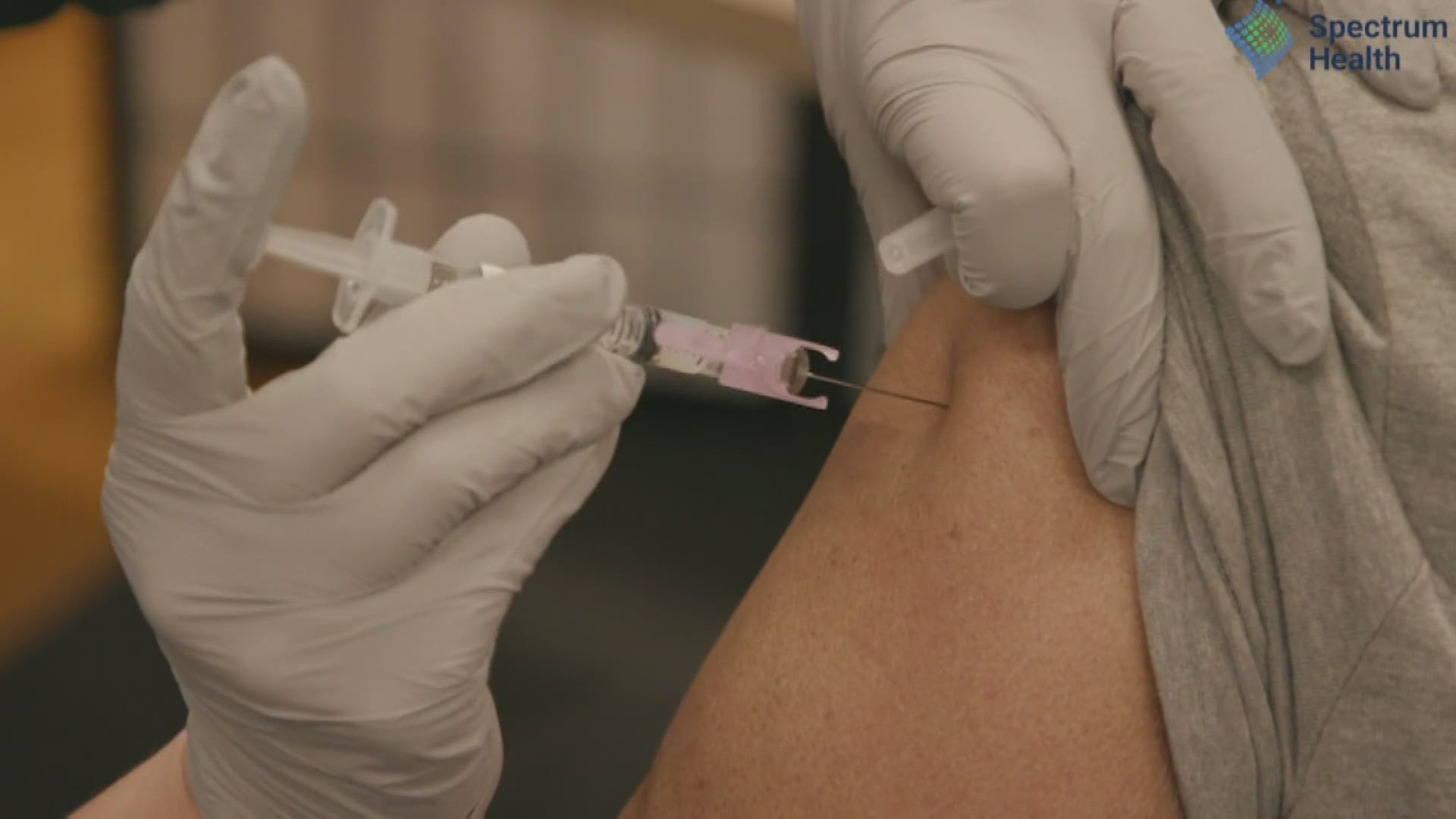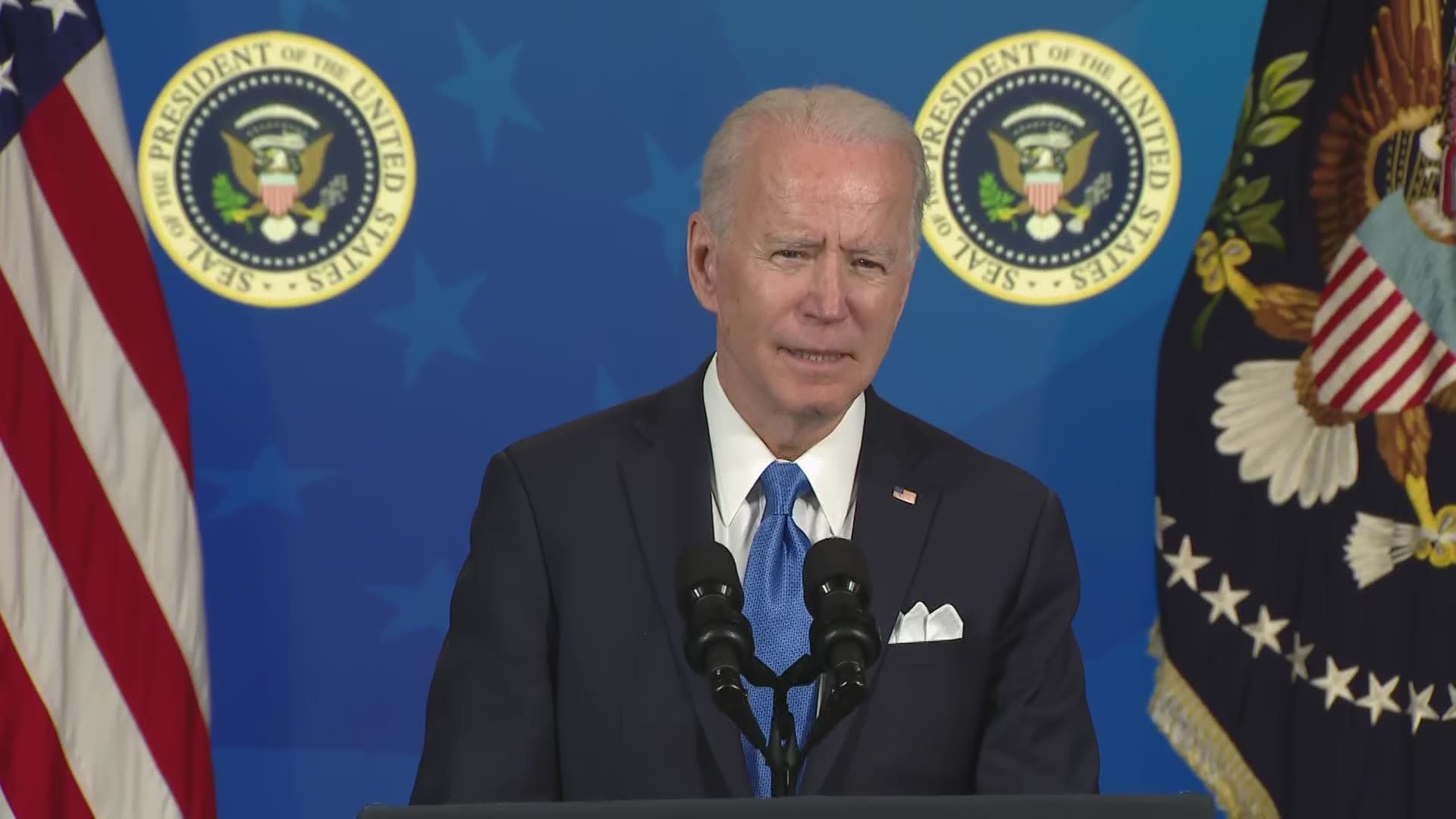It's been just under three months since the first trucks rolled away from Pfizer's Portage facility carrying the COVID-19 vaccine, and health officials say much has changed in the time since.
Two more vaccines, from Moderna and Johnson & Johnson, are now available, and an increasing number of people are becoming eligible for the shot in Michigan.
"We are so happy to say that we have all three vaccines available," said Kathy Moore, Muskegon County's public health director.
"We are vaccinating all of the eligible phases and groups simultaneously."
Kent, Ottawa and Muskegon counties have vaccinated between 13-14% of their population 16 years old and older. The state's goal is to vaccinate 70% of that population as soon as possible.
The state is providing prioritization guidance, which most counties are following, but the rollout has looked slightly different from place to place.
At some points, local health leaders say they were not prepared for the state to open up new eligibility groups and have had to play catch up.
"Definitely with the 65 plus from the state, we weren't quite prepared for that and we kind of looked a little bit bad in that because we didn't have vaccine supply or systems in place to handle that demand right when it came out," said Kent County epidemiologist Brian Hartl. "So, I wish we could do that over again."
But, the situation has improved in recent weeks.
Muskegon has a goal of vaccinating everyone 65 years old and older by the end of March. Ottawa County's Department of Public Health is nearly through its waitlist for that age group, said public information officer Kristina Wieghmink. Kent County Health Department says about one third of the 65 and older age group is fully vaccinated.
Kent and Ottawa counties say they are working to launch vaccine dashboards soon that will include more details on their rollouts so far. The state's vaccine dashboard recently started including demographic data, though it is incomplete.
Hartl, with KCHD, said early data showed disparities in vaccine administration so far, something that all three counties said they are working to offset by holding smaller, more accessible clinics.
"We're definitely seeing similar trends here locally that we saw at the state level, and that's why we're doing what we're doing to try to resolve that," Hartl said.
The three counties said community partners, especially in Black and brown communities, have helped facilitate the success of clinics by eliminating barriers to registration and the vaccination process itself.
"We are a small public health department, so we absolutely could not do this without our local partners," Moore said of Muskegon County.
Although supply is still not at the level the local health departments had hoped, it is becoming more steady.
"I'm feeling much better about it and it's not necessarily an increased amount, but it is a consistent amount. So, it's much easier to plan," Moore said.
Muskegon County Health Department is receiving about 1,800 first doses a week that it's dividing up to ensure people from each eligibility group have access to, Moore said.
Spectrum Health, which is running the waitlist and registration for its own clinics, as well as, the West Michigan Vaccine Clinic at Devos Place, said it's reaching new levels in its vaccination efforts.
"We will deliver upwards of 20,000 doses by the end of the week this week, which is a new record for us. We've been running about 10 to 15,000 for several weeks," said Chad Tuttle, vice president of Spectrum Health West Michigan.
The capacity at the large-scale Devos Place clinic alone is enough to do roughly 20,000 shots a day at max capacity. But, supply is not yet near allowing for that. However, Tuttle said the health system has been hearing promising news about future shipments.
"We are very, very optimistic. Everything we're hearing from the state and federal resources is that vaccine availability is going to increase exponentially over the coming week, so it's not just going to be a 10% increase. It might be two to three times the amount we've been receiving to date," Tuttle said.
More supply means more appointment availability. Wieghmink with OCDPH said the county is working on smoothing out communications as the vaccination effort continues.
"We know people have busy schedules and want to plan things ahead of time, and we hope to be able to do that as we get more and more vaccine," she said.
In the months to come, Hartl said he expects there to be a shift in the way vaccinations are administered.
"I think slowly we'll move away from the larger mass vaccination kind of thing that we're doing right now to a more normal vaccine distribution like we see typically with an influenza vaccine," he said.
Wieghmink and Moore both say they expect the months to become more challenging as we work toward herd immunity.
"It is going to take a lot of effort," Wieghmink said. "It's going to take educating one another, sharing our stories of why someone got vaccinated, you know, are you doing it for your own health? Are you doing it for your grandparents? Are you doing it because you want to help end this pandemic?"
Moore expects demand will drop off especially for younger age groups and as the vaccine becomes more readily available.
"Right now, people are like waiting by the phone and when we call it's like 'I can come right now,'" Moore said. "So, I do think it's going to change the whole culture a little bit."
But, Hartl says the need for vaccinations only continues to grow as new variants pop up in the state.
"Every time the virus infects someone that provides the virus a chance to mutate and change and adapt to survive," he said. "So the more people we can get vaccinated, more quickly. It's going to give the virus less chance to do that."
RELATED VIDEO:
►Make it easy to keep up to date with more stories like this. Download the 13 ON YOUR SIDE app now.
Have a news tip? Email news@13onyourside.com, visit our Facebook page or Twitter. Subscribe to our YouTube channel.


